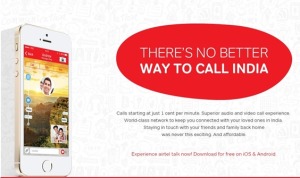In all the chaotic hullabaloo which arose on Airtel’s VoIP Data charges issue (detailed article on the issue currently in progress), another protest which drew comparatively little attention (probably due to the substantially lesser individuals/entities it affected) was the protest by International Long distance(I.L.D.) Operators against the Company’s practice of advertising it’s own VoIP Application Airtel Talk over long distance calls. Specifically, a few seconds before connecting the call.
I am a total outsider to the precise details of the case, and the facts are also disputed (I.L.D. Operators claim the advertisement was run selectively only on those networks with whom Airtel had not entered into collaboration agreements. Airtel denies this and claims that the advertisement was played on all networks equally without any discrimination.) But it did get me thinking on the issue of Advertising in Competition Law.
Prima-facie, one would consider advertising and competition law as congruous to each other. After all, advertising is an essential part of the competitive process in any economy. If a consumer is not aware as to what goods and services are on offer and at what price they are on offer, he or she will be unable to choose between the suppliers of the goods or services, and therefore, competition between suppliers may get diminished. But in this imperfect and admittedly anti-competitive world that we live in, it never is that simple. There are two different scenarios which need to be considered while addressing the issue of advertising and competition law.:
Individual Advertising
Individual Advertising is what I referred to above, i.e., an individual entity choosing to advertise it’s products with the aim to grab market share from competitors in the same sector. This would generally not be subject to perceived anti-competitive harm. Misleading and false advertising, including comparative advertising, may be concerns, but in India they would dealt before other fora. There is however some literature which suggests that advertising paradoxically carries with it an inherent anti-competitive effect as advertising costs act as a serious barrier to the entry of new entities wishing to enter a market which is already dominated by a few relatively large competitors, especially in markets which inherently require enormous amounts to be spent in building up a brand name for the product/company. In fact, Bork has even gone so far as to state that it should be considered as a Barrier to trade !! (See Robert H. Bork, The Antitrust Paradox.)
Horizontal Agreements on Advertising
This refers to agreements among competitors in a market, and needless to say, these are a bit problematic. Any agreement among entities which restricts advertising would generally be considered as an anti-competitive agreement.
However, the reaction of the European Commission (E.C.) has been mixed depending upon the facts and circumstances of each case. While in the case of Belgian Roofing Felt, OJ [1986] L 232/15 (later upheld on Appeal in Belasco v. Commission, [1989] ECR 2117) the Commission ruled against joint advertising which led to a uniform image of products in a market wherein individual advertising would have facilitated differentiation, and consequently competition, on the other hand, in Re CECIMO, OJ [1969] L 69/13 and UNIDI, OJ [1984] L 322/10 (later upheld on Appeal in ANCIDES v. Commission, [1987] ECR 3131), it was accepted that it is sometimes desirable to rationalise and coordinate advertising efforts while imposing certain conditions on such coordination.
Post Script: The Advertising Market
As a post script, other than the above, an important area where competition needs to be maintained is the advertising market itself. It is important that the advertising media itself should function in a competitive manner free from any anti-competitive practices, including (but not limited to) any practice which might lead to reduction of advertising space in the market. This has been affirmed in the U.S. as far back as 1951 in Lorain Journal Co. v. United States, 342 US 143 (1951). One such allegation has already arisen before the C.C.I. is the case of Advertising Agencies Guild v. Indian Broadcasting Foundation, Case No. 35 of 2013. Though that particular Information was closed, the currently running Google Investigation before the C.C.I. involves similar issues (among others) and one will have to wait and watch for further competition law developments in this area.



